Bug Out Bag List 2024 (Printable): Essentials For Surviving The Next Disaster
When you purchase through links on our site, we may earn a commission. Here’s how it works.
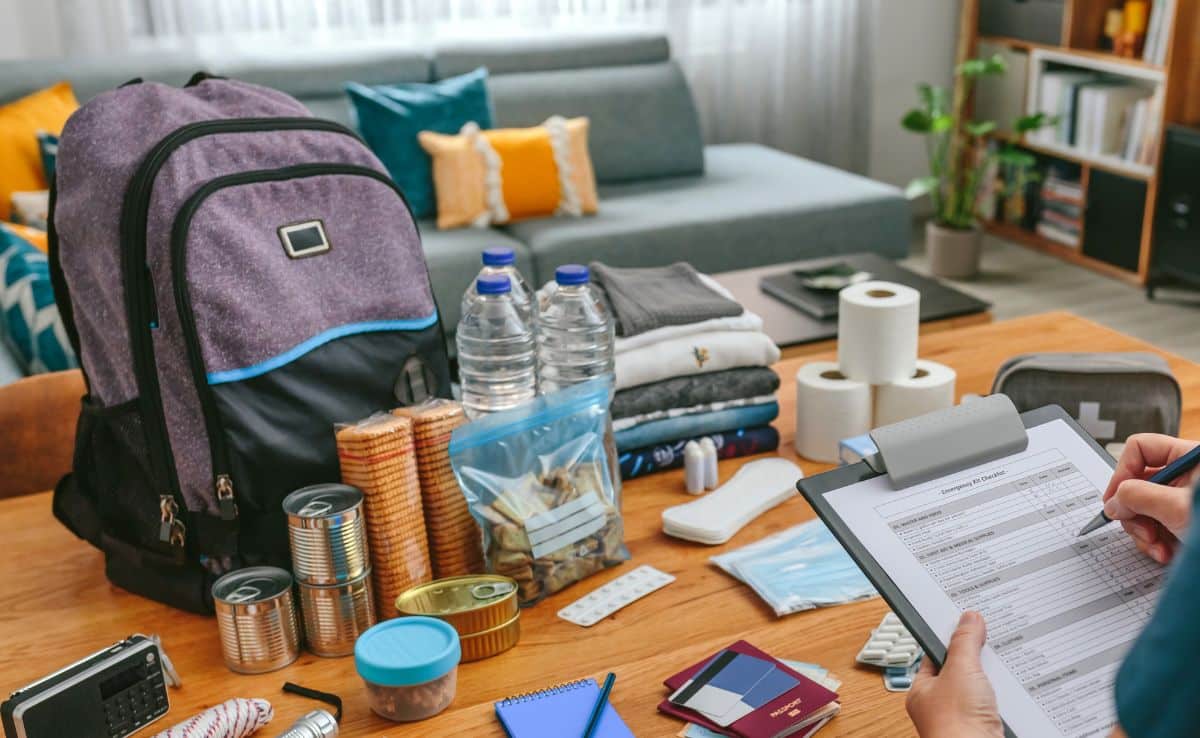
Natural disasters like fires, tornadoes, and wildfires often happen suddenly and without warning. Quickly gathering up your family and getting to a safe place should be your number one priority, not searching for emergency preparedness supplies. That’s why these disaster preparedness kits can be lifesavers.
We’ve come up with 12 key categories you’ll want to consider to ensure you have all the bug-out bag essentials. Get your bug out bag ready today with these must-have’s, and you’ll be prepared for the next natural disaster.
4 Things To Consider When Choosing A Bug Out Bag
You can choose your bag before or after you’ve purchased your survival gear. It’s up to you, but there are 4 things you’ll want to consider when choosing a survival bag.
- Choose a bag that is made of sturdy material (a plastic bag won’t work for this).
- A bag with many pockets can be handy because you can quickly access smaller items.
- A bag with two straps you can put over your back makes it easiest to carry around instead of a duffel bag (but it’s completely up to you what your preference is).
- If you know what is going into your bag, it may help you choose the best bag to fit your items.
All-In-One Bug Out Bag
We’ll get into details about what goes in bug-out bags below, but if you don’t have time to put this bag together yourself, you can buy an all-in-one solution like the Emergency Zone Stealth Tactical Bug-Out Bag ( ).
12 Must-Haves On A Bug Out Bag List
Start with the items listed in this article and build on them to customize them for your needs. Remember, the best bug-out bags are filled with the necessities. So keep in mind that every item counts towards the weight you will carry but also may determine your survival.
Here’s a bug-out back checklist to make your own and ensure you have all the basics to survive.
1. Water & Containers For Water
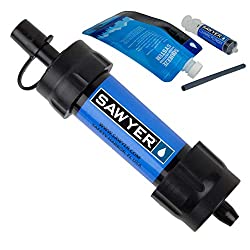
According to HealthLine, a person can’t go longer than a few days without water; making it essential for your bug-out backpack.
We suggest no less than 1 liter of water per person per day. You may also consider drink mixes like tea or Gatorade to give you additional energy. Be cautious, though. Some teas have caffeine which may dehydrate you. Below are some items we recommend for your hydration needs.
- Water
- Water Filters/Water Purification Tablets ( $12.99 )
- Canteen ( $22.99 )
2. Food & Utensils
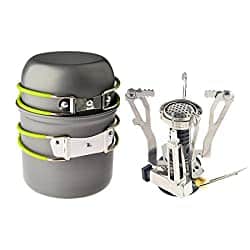
According to Scientific American, it’s rare for a person to survive longer than a couple of weeks without food. We suggest planning your survival food with the idea in mind that you’ll have no resources to prepare it (meaning water).
That’s why we aren’t recommending any dehydrated food that needs water in this section, although you can include it if you’d like. We also recommend choosing foods that last long, aka no fresh produce, meats, etc. You want to choose your emergency food supply so that you don’t have to be replacing it every week in your bug-out bag.
- Camp stove cookware and utensil kit
- Metal Pot
- Metal Cup
- Spork
- Protein Bars
- Can Opener
- Portable Stove ( $22.98 )
- Stove Fuel
- Canned Foods
- Dried Fruit
- GORP (Good Old Raisins & Peanuts), aka Trail Mix
- Peanut Butter
- Fishing Kit
3. Fire Essentials
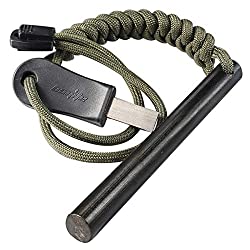
The ability to start a fire is extremely important. Not only does it help with sterilizing water, but it also helps keep you warm. We suggest having multiple forms of starting a fire. Below are five. You never know when one might fail.
- Lighter
- Flint & Steel ( $13.95 ) (practice with this ahead of time — it can be tricky)
- Matches
- Tinder
- Waterproof Storage (to hold these supplies)
4. First Aid
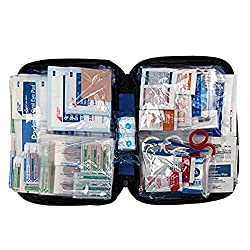
You can buy pre-made first-aid kits ( $21.08 ), or you can create your own. Our survival bag has a pre-made first aid kit that includes gauze, antibiotic ointment, a pain reliever, a Mylar survival blanket ( $9.99 ), and more. Below are four more things you’ll want to include.
- Insect Repellent
- Anti-Diarrhea Medicine
- Prescriptions
- Bandana
5. Clothes

Depending on your location and the climate, you may need different clothes. We suggest re-evaluating your bug-out bag every season to ensure it’s filled with the proper clothing. Consider having a group of clothing for each season set aside for you to replace in your bag easily.
We also recommend having two sets of clothing; if one gets wet, you’ll have another that is dry. (Hypothermia is the last thing you want!)
When choosing your clothing, we suggest going with pieces that will blend into the environment so you do not stand out. Camouflage is always a good option.
- Underwear
- Zip-Off Pants
- Long Sleeve Shirt (Lightweight)
- Wool Hiking Socks
- Fleece (Medium Weight)
- Hat
- Gloves
- Rain Coat/Poncho
- Sunglasses
- Shemagh ( $15.00 ) (like the Survivor Buff)
- Sewing Kit ( $4.79 )
6. Bedding
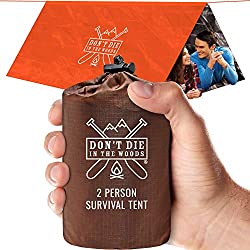
When choosing the items listed in this category, you want them to be more compact. So things aimed towards backpackers are good because they’re typically more lightweight and can be compacted down.
- Tent ( $21.95 )or Tarp (For Shelter)
- Sleeping Bag ( Check Amazon for availability )or Wool Blanket
- Sleeping Mat ( $41.99 )
7. Hygiene
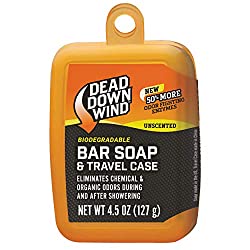
You may think hygiene isn’t necessary when you’re in a life-threatening situation, but bacterial infections can be lethal. Be sure to include these eight items in your bug-out bag.
- Hand Sanitizer
- All-Purpose Soap ( )
- Toilet Paper
- Toothbrush & Toothpaste
- Small Towel
- Wet Napkins
- Mirror (Not only for hygiene but to use for signaling someone as well.)
- Condoms
8. Tools
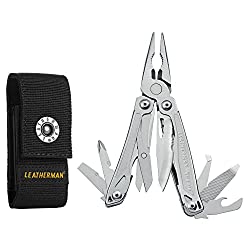
Survival tools are a fun area to cover, but remember that every ounce counts. So try not to overdo it here. We recommend these five tools.
- Multi-Tool ( $69.95 )
- Survival Knife ( $49.97 )
- Rope
- Duct Tape
- Survival Guide ( $12.97 )
9. Lighting Source
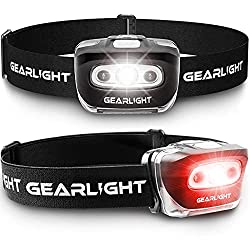
Being able to see in the dark is important no matter what type of survival situation you are in.
- Headlamp ( $19.99 ($10.00 / Count) )
- Glowsticks ( $13.95 )
- Candles
- Batteries
- Mini LED Keychain ( $12.96 )
10. Communication
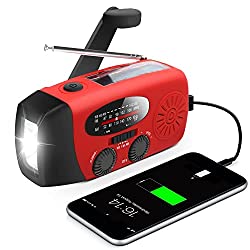
If the scenario calls for these items, you’ll find them to be critical.
- Cell Phone
- Hand Crank Power Charger & Radio ( $19.90 )
11. Navigation
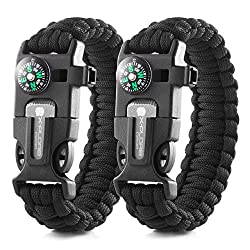
These are five items you’ll want to carry whenever you travel or for more dangerous scenarios.
- Emergency Whistle ( Check Amazon for availability )
- Pencil & Note Pad
- Compass ( Check Amazon for availability )
- Map/Atlas
- Cash in Small Bills (We recommend at least $500.)
12. Protection Equipment
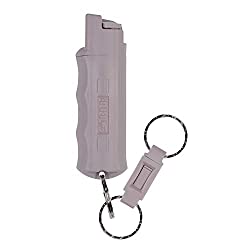
Different bug-out situations can mean different levels of safety. You may need to defend yourselves against other people or animals or you may need equipment for hunting. Weapons are a category many people are passionate about. Be sure to choose your self-defense equipment wisely. Only choose items that you are comfortable handling.
- Pepper Spray ( $9.96 )
Bug Out Bag Checklist (Infographic) (Printable)
We’ve created a survival gear list for you to print off and shop online or take to the store, so you make sure to purchase all of the necessary survival equipment and get them stored in your pack for a quick getaway.

How To Survive Zombie Apocalypse
Are you planning your bug-out bag for a zombie apocalypse? There are other things you should consider besides the contents of your bag. Ever heard of the quote by Jim Butcher?
You don’t have to run faster than the
bearzombie to get away. You just have to run faster than the guy next to you.
Ok, so this quote is in regards to bears, but it fits perfectly for zombies too. During a zombie apocalypse, you’ll probably find yourself in a race. So get your running shoes on and do your cardio!
How Many Days Should I Plan For?
We suggest planning your bug-out bag contents for three days. Within three days, we hope that you can find other sources of water, food, shelter, and other necessities to keep you alive. Keep in mind that everything listed in this article may not fit into your bug-out bag. That’s why it’s important only to pack what you think is necessary.
Other ideas are to get clips and straps to tie or attach things to the outside of your bag but remember, every extra item adds weight. If you’re looking for a bag that can hold all of this, we suggest looking at backpacking bags ( $52.99 ). They make for some of the best bug-out bag backpacks.
Are You Prepared?
Want to make sure you’re extra prepared? Be sure to check out our emergency kit recommendations and survival food kit options.



